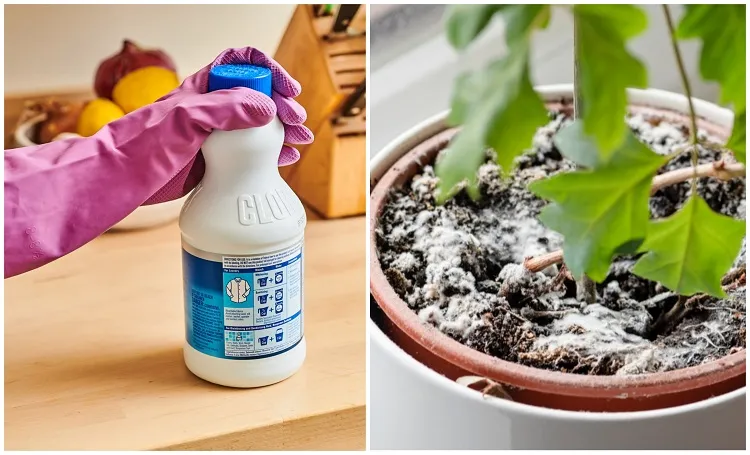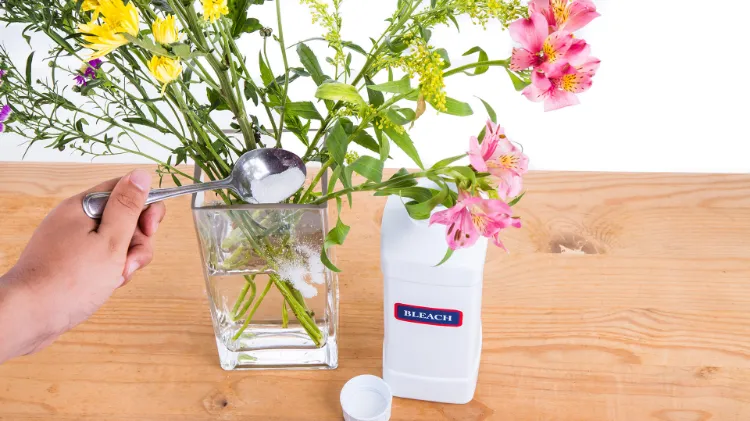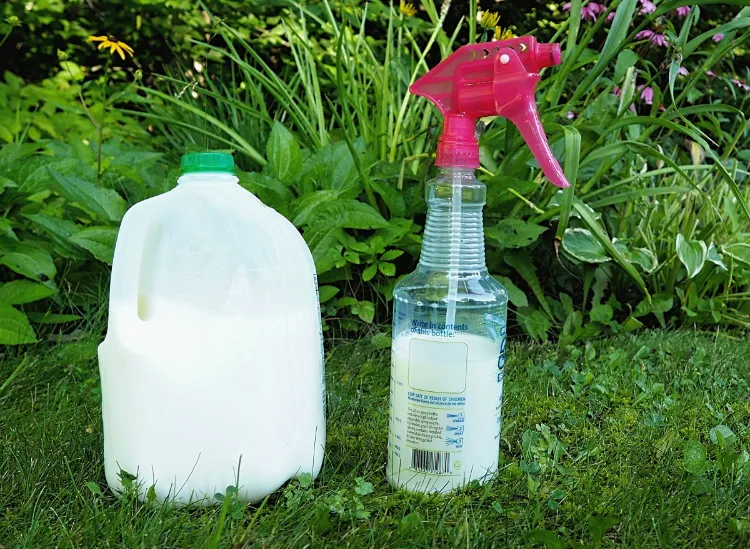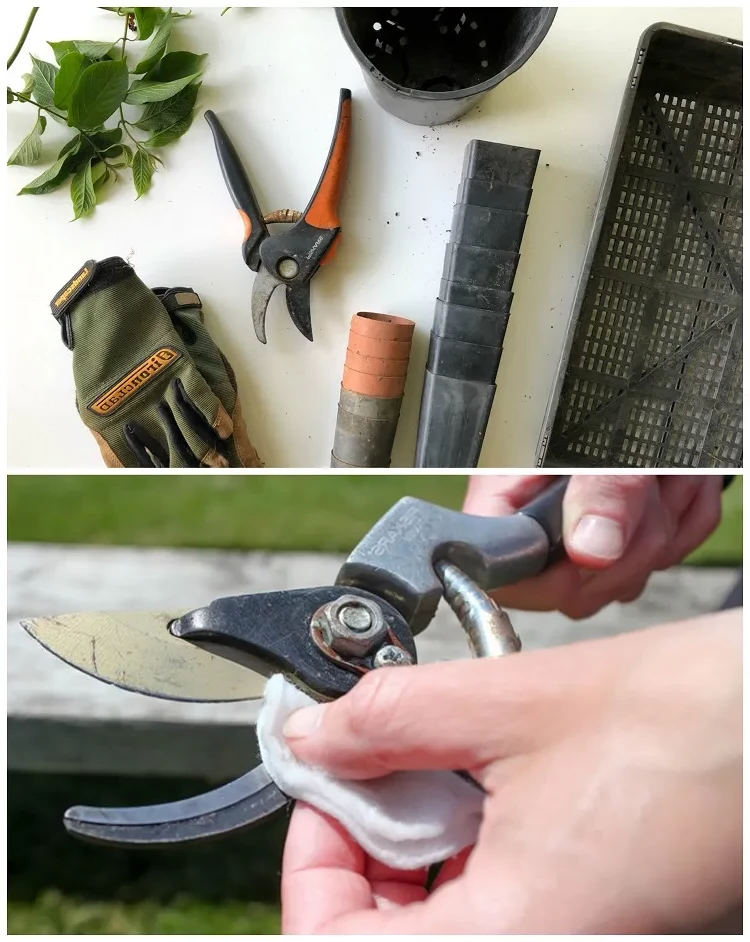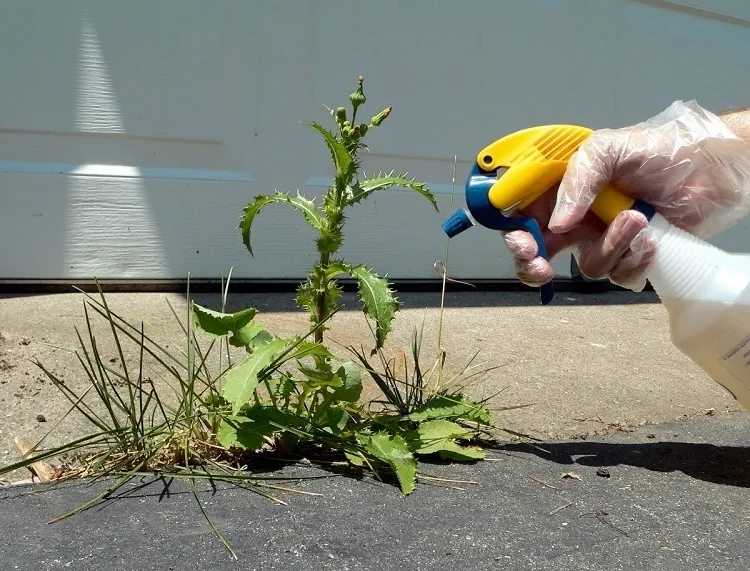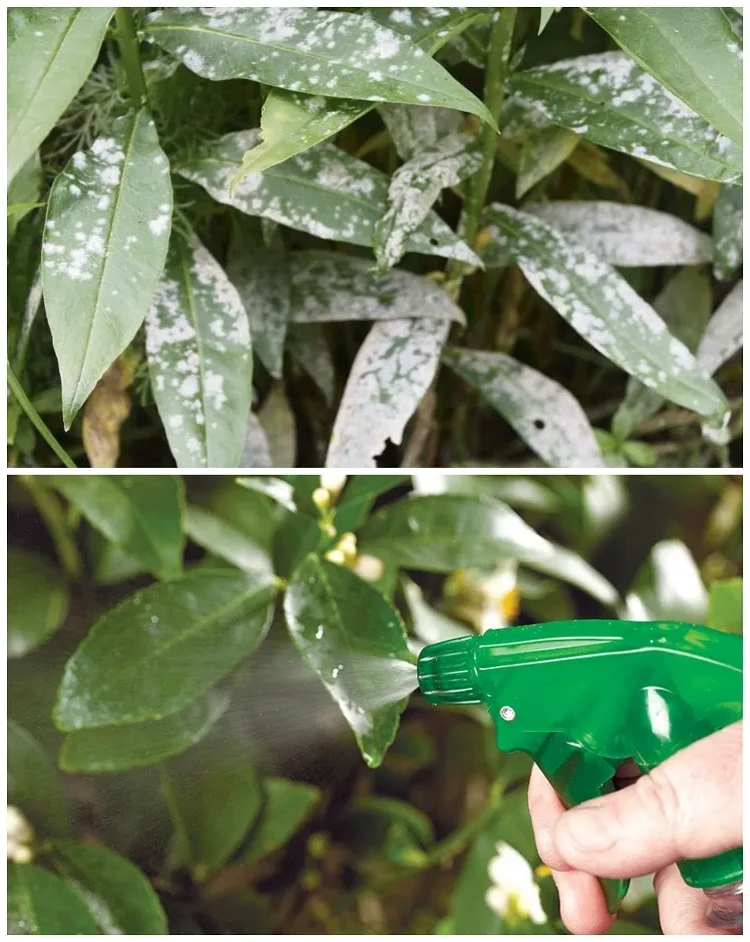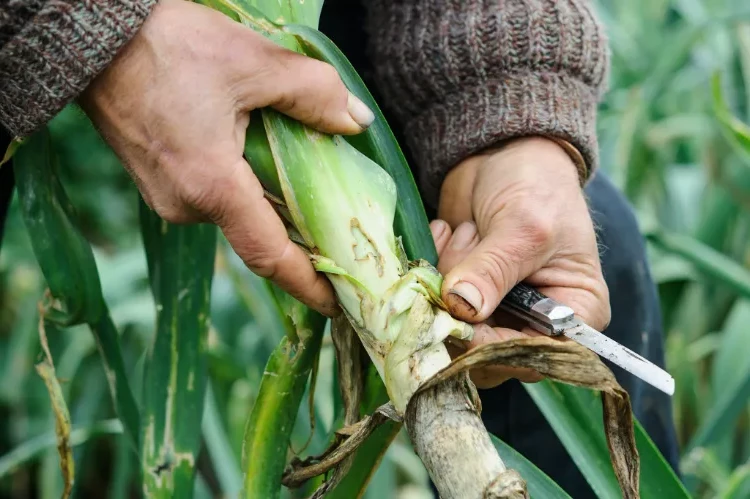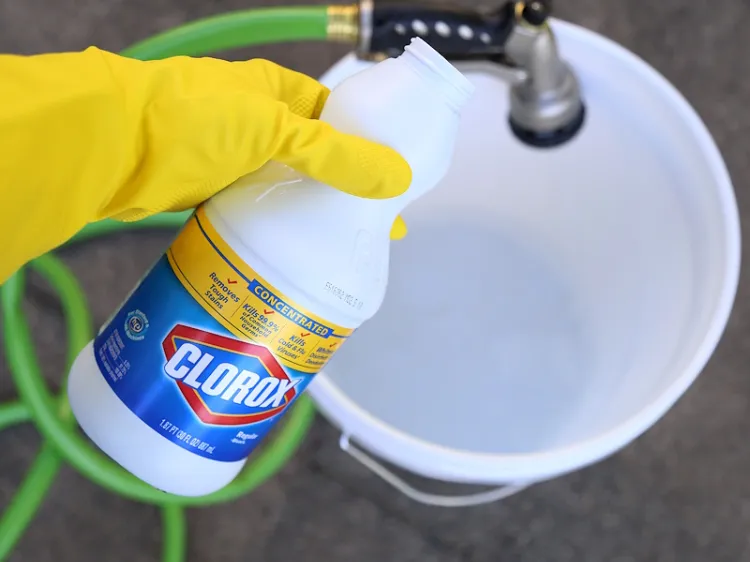A versatile whitener, stain-removing and disinfecting product, bleach is very effective for cleaning the bathtub, sanitizing appliances and whitening laundry. It was a valuable ally during the covid-19 pandemic by disinfecting the whole house and reducing the risk of contamination. But can you use it in any other ways? Very popular for keeping the whole house clean, bleach can also be used in the garden to take care of your greens. And although there are many tricks to pamper them, pouring bleach on flowers and plants is certainly one of the most effective ones that the editor has just tested!
Does bleach kill plants?
Are you used to using bleach only at home to whiten your clothes? What if we told you that you can pour bleach on your flowers and plants to protect them from pests (leek worm) and certain fungal diseases such as tomato mildew and powdery mildew? Adding bleach to the water of your flowers is also a great idea to restore the shine of your pretty bouquet! In short, this chemical is very useful for your green space. It therefore does not kill the plants! Incredible but true, our tips are surprising and yet they work every time. Here is the proof!
Why pour bleach on flowers?
Pouring bleach on your flowers is a trick that may surprise some people, but it is very effective in keeping your bouquet of fresh flowers longer or to give a second life to your flowering plants in pots! The trick? Add a teaspoon of sugar to feed the flowers, a tablespoon of white vinegar to keep the water clear, and two drops of bleach to prevent bacteria growth.
How to use bleach in the garden?
According to the gardeners at Deavita, pouring a little of this chemical into the feet of your flowers will keep them healthy. If your orchid is sick, mix 25 ml of bleach with two liters of water in a spray bottle, then spray a little of this mixture on the flowers and leaves to eliminate fungus or other pests. Use the same trick to weed your paving stones, disinfect your tools or to fight against the leek worm. Your garden will thank you!
To disinfect your garden tools
To disinfect your garden tools, your terracotta flower pots, your trellises, your garbage can or even your winter greenhouse, use either rubbing alcohol or bleach. To do this, dilute a glass of bleach in a liter of water. We remind you that the pots and trays used for one type of culture must be disinfected before being reused for new cultures in order to avoid the spread of bacteria and fungi. The same applies for cutting tools, wooden trellises, seedling crates and your greenhouse where fungal diseases spread very easily. Tip: if the joints of your greenhouse are covered with mold, spray them with a little bleach to whiten them.
To remove weeds
Does bleach kill weeds? How to get rid of mallow or other weeds with bleach? Since it is a very aggressive chemical, bleach is the perfect ally for clearing grass and weeding borders, paths and patios. Thanks to its active ingredients, it dries out weeds very quickly. Please note: using bleach as a weed killer for brambles in the garden may cause your neighborhood cats to defecate there. Moderation is therefore essential! But while it attracts felines, bleach scares away rats!
As a fungicide against fungal diseases
How to use bleach against mildew? Due to a pathogenic fungus, mildew and powdery mildew are devastating diseases that attack crops, especially on tomato leaves and potatoes. This vegetable garden disorder is quite common and has the potential to cause serious damage to your crop. To treat this, simply dilute 25 ml of bleach in 2 liters of water and spray the plants, avoiding the hours of sunshine. Also remember to protect the ground well, because bleach, even highly diluted, has a harmful impact on the fauna and flora of the earth. Lastly, this product is also very useful if you have just pruned a plant or a tree affected by a fungal disease.
Pour bleach on flowers to eliminate pests
The leek worm is the dread of all gardeners. This little beast digs holes in the leaves of plants to reach the stem until hatching. To treat this, turn to bleach. Before transplanting, soak the plant (including the roots) in a mixture of one capful of bleach and one liter of water.
Pouring bleach on flowers and plants: Precautions to take
The skull and crossbones symbol on the bottle is significant evidence that bleach is toxic. It is corrosive and can cause burns to the skin and mucous membranes. Using bleach can also cause nausea, headaches, and severe respiratory reactions. Therefore, the following precautions should be taken:
- Wear gloves when using bleach.
- Store the product out of reach of children and pets.
- Do not ingest bleach.
- Never treat your flowers with bleach on sunny days.
- In case of contact with eyes and skin, rinse well.
- Do not mix bleach with cleaning agents, acids or descalers.
- Do not dilute bleach in hot water.

